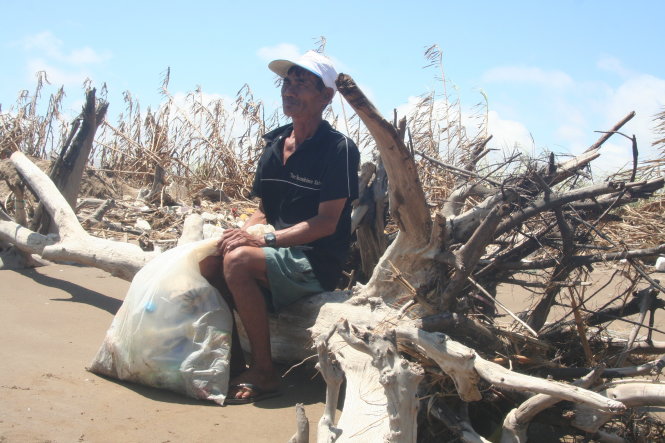Tens of thousands of inhabitants of the Mekong Delta in Vietnam have lost their houses to land erosion, especially along river banks, as the result of an decrease in the volume of water in rivers.
This is one of the concrete impacts of climate change, which is believed to cause major damage to coastal nations like Vietnam.
It is predicted that a million people living in coastal areas and along river banks will have suffered direct adverse effects from land erosion by the year 2050, said Doctor Dao Trong Tu, counselor of the Vietnam Rivers Network.
A report by the World Wildlife Fund showed that 48 percent of coastal areas in Ben Tre and Tra Vinh Provinces in southern Vietnam are in the process of retreating from the sea.
Similarly, 70 percent of the southernmost province of Ca Mau’s coastal areas are in the retreating process.
In short, the area of the Mekong Delta, which is considered the rice bowl of the country, has become smaller and smaller year after year.
Not only residential areas but also protective forests along the coast of the Mekong Delta may soon be eradicated thanks to the fast rate of erosion.
A brief survey showed that Ca Mau, which has a coastline of 254 kilometers, lost 5,000 hectares of farming land in 2007 due to rising sea level.
The loss reached 20,000 hectares in 2011, and will multiply to 90,000 hectares, or a sixth of the total area of Ca Mau, in the near future.
On average, the edge of sea water ‘licks’ from 15 to 50 meters deeper into coastal areas of Ca Mau every year.
To Quoc Nam, deputy director of the provincial Department of Agriculture and Rural Development, said that land erosion has occurred at a complex rate that is hard to predict.
Apart from the ‘shrinkage’ of the Mekong Delta peninsula due to rising sea level, land erosion along river banks in the mainland has posed more challenges for local inhabitants.
In addition, the Mekong Delta region has sunk in recent years due to land depression as the result of the over exploitation of groundwater.
Experts from the Norwegian Geotechnical Institute once warned that Ca Mau is sinking from 1.56cm to 2.3cm a year.
The water level of the Ganh Hao River has risen an average of 73cm in the last five years, which is the combined consequence of both land depression and rising sea level in the region.
Doctor Bui Cach Tuyen, deputy environment minister, explained that, “The loss of land and the change in water volumes of rivers in the Mekong Delta is the direct result of the construction of hydroelectric power plants in the upstream areas of the Mekong River in Cambodia, Laos and China.
“The storage of great amounts of water in the reservoirs of the projects has caused a change in the quality and quantity of sediment and alluvium in the water flow of the Mekong River,” Tuyen said.
Like us on Facebook or follow us on Twitter to get the latest news about Vietnam!
























































